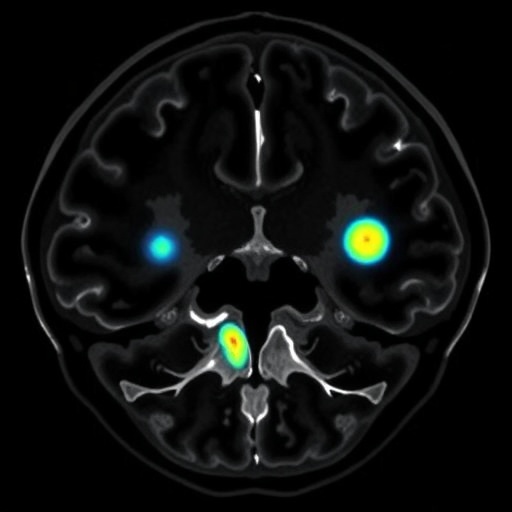In the rapidly evolving realm of molecular biology, one of the most captivating frontiers is the epitranscriptome—the layer of chemical modifications that decorate RNA molecules beyond their sequence code. Among these modifications, N6-methyladenosine (m6A) stands out as a powerful regulator of gene expression, fine-tuning cellular processes with remarkable precision. Emerging research now highlights m6A’s pivotal role not only in routine cellular function but also in the sinister rewriting of the genetic code in cancer. A profound understanding of this epitranscriptomic sculpting unlocks new narratives in how alternative splicing and tumor progression intertwine, offering fresh perspectives and innovative therapeutic targets.
Alternative splicing, the molecular alchemy by which cells rearrange RNA instructions to create diverse protein isoforms, acts as a central theme in this epitranscriptomic saga. Normally, it endows cells with functional diversity, allowing a single gene to produce a spectrum of biologically distinct products. However, when m6A patterns are disrupted, this splicing choreography is thrown into disarray. The latest investigations reveal that m6A modifications serve as critical molecular beacons, directing the spliceosome—the intricate machinery responsible for excising and stitching RNA segments—to favor or skip specific exons. This influences which messenger RNA (mRNA) variants are produced and, consequently, the proteins synthesized.
Delving deeper, the presence of m6A marks affects alternative splicing by recruiting specialized reader proteins, such as YTH domain family proteins. These readers interpret the methylation signals and orchestrate subsequent molecular events on the RNA substrate. When these processes go awry, aberrant m6A patterns can induce splicing alterations that favor oncogenic isoforms—variants that promote uncontrolled cell proliferation, evasion of apoptosis, and metastasis. This epitranscriptomic misregulation creates a molecular ecosystem conducive to cancer progression, with alternative splicing emerging as a linchpin that subtly reprograms cellular fate.
Recent studies have begun to illuminate the dynamic interplay between m6A writer enzymes (like METTL3 and METTL14), erasers (such as FTO and ALKBH5), and readers, crafting a nuanced regulatory network. Writers deposit m6A marks onto pre-mRNA transcripts during or immediately after transcription, setting the stage for splicing decisions. Erasers, conversely, can remove these methyl groups, offering a reversible layer of control. This balance is crucial; disruption can tilt the cellular transcriptome towards oncogenic states by promoting pro-cancerous splicing arrangements.
In this sophisticated molecular ballet, cancer cells exploit the plasticity afforded by m6A-dependent alternative splicing to adapt and thrive. Tumors harness the flexibility of epitranscriptomic remodeling to develop drug resistance, modify their microenvironment, and pivot rapidly between proliferative and invasive phenotypes. Thus, m6A is not just a silent observer but an active sculptor of cancer evolution, directing the epigenetic artistry that underlies malignancy.
On a technical front, the study of m6A’s influence on splicing has been propelled by revolutionary sequencing technologies combined with advanced computational methodologies. Techniques like m6A-seq and MeRIP-seq enable transcriptome-wide mapping of m6A sites, revealing methylation “hotspots” that coincide with splicing-regulatory regions. Coupled with RNA-seq data, these approaches allow researchers to correlate methylation patterns with specific alternative splicing events. Machine learning algorithms and bioinformatic pipelines further distill these complex data sets into actionable insights, pinpointing candidate m6A sites with functional relevance in oncogenesis.
Moreover, innovations in CRISPR-Cas tools adapted to RNA have ushered in the capacity to manipulate m6A modifications with unprecedented precision. Epitranscriptomic editing now permits targeted installation or removal of methyl marks at specific RNA loci, enabling functional dissection of causal relationships between m6A and splicing outcomes. These experimental advances furnish a molecular scalpel to pinpoint how aberrant methylation directly rewires splicing programs in cancer cells.
The therapeutic implications of these discoveries are profound. Pharmacological targeting of m6A writers, erasers, or readers could modulate alternative splicing landscapes, restoring normal gene expression patterns or selectively crippling cancer-supportive isoforms. Early-stage small molecule inhibitors of METTL3 or FTO have demonstrated promising anti-cancer activity in preclinical models by reversing oncogenic splicing patterns. This epitranscriptomic intervention represents a paradigm shift—targeting RNA modifications rather than DNA mutations or protein targets alone.
Furthermore, m6A-related splicing signatures hold tremendous potential as diagnostic and prognostic biomarkers. Since splicing aberrations often precede phenotypic manifestations, profiling m6A-linked splice variants could enable earlier cancer detection and more tailored patient stratification. Liquid biopsy approaches capturing circulating tumor RNA methylation landscapes could revolutionize non-invasive cancer monitoring, allowing real-time tracking of tumor evolution and treatment response.
Yet, challenges remain. The transient and conditional nature of m6A modifications complicates their study in heterogeneous tumor tissues. Moreover, the interplay between m6A and other RNA modifications, such as pseudouridylation and 2′-O-methylation, adds layers of regulatory complexity still to be untangled. Deciphering the full epitranscriptomic crosstalk and how it integrates with the broader epigenetic milieu is a formidable task requiring multidisciplinary collaboration.
Despite these obstacles, the field is rapidly advancing towards a comprehensive framework describing how m6A remodels RNA splicing in cancer. The cumulative knowledge fosters optimism that epitranscriptomic modulation will soon be harnessed clinically to undermine cancer’s adaptive capacities. As more sophisticated technologies emerge, the horizon promises not just deeper understanding but transformative translation—shaping the future of precision oncology by rewriting the RNA code itself.
In sum, the dynamic epitranscriptomic landscape sculpted by m6A emerges as a grand architect of alternative splicing regulation, aggressively influencing cancer progression. Its discovery reframes our grasp of gene expression regulation, transcending static genome sequences to embrace a fluid and reversible informational layer. This paradigm catalyzes innovative approaches in cancer research, diagnostics, and therapy, charting a course toward epitranscriptomic precision medicine—a frontier poised to redefine molecular oncology.
Subject of Research: Epitranscriptomic regulation by m6A in alternative splicing and cancer progression.
Article Title: Epitranscriptomic sculpting: the role of m6A in alternative splicing, cancer progression, and methodological insights.
Article References:
Altalbawy, F., Azzam, E.R., Alkhathami, A. et al. Epitranscriptomic sculpting: the role of m6A in alternative splicing, cancer progression, and methodological insights. Med Oncol 42, 492 (2025). https://doi.org/10.1007/s12032-025-03045-0
Image Credits: AI Generated
Tags: alternative splicing and RNA regulationepitranscriptome and gene expressiongenetic code alterations in cancerm6A and tumor progressionm6A modification and cancerm6A patterns and splicing machinerymolecular biology of m6ARNA isoform diversity in cancerRNA modifications and cellular processesrole of m6A in splicingspliceosome function in cancertherapeutic targets in cancer treatment





